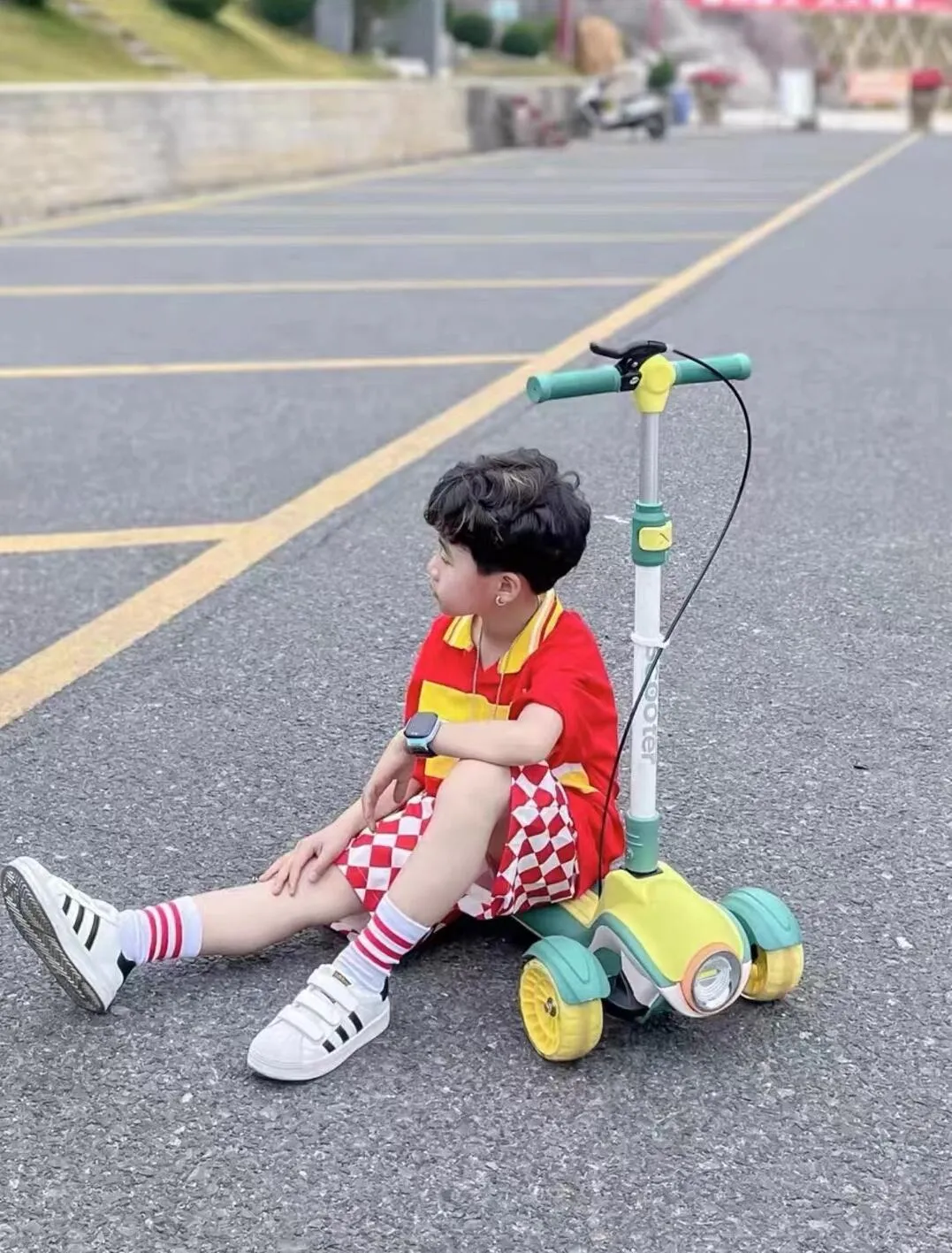How to Test the Stability of Kids Scooters
Ensuring the stability of a kids scooter is crucial for their safety and confidence while riding. Whether you’re considering a foldable kids scooter, a 3-wheel scooter for a big kid, or any other type of scooter for kids, here are key steps and considerations for testing its stability.

Understanding Stability in Kids Scooters
Stability in a scooter helps prevent falls and injuries by providing a balanced, smooth ride. Here’s how you can test and ensure the stability of different types of kids' scooters.
Testing a Foldable Kids Scooter
Foldable kids scooters are popular for their convenience and portability. Here’s how to test their stability:
1.Check the Folding Mechanism:
Ensure the folding mechanism locks securely in place when the scooter is unfolded. A stable lock will prevent the scooter from folding unexpectedly while in use.
2. Inspect the Base and Deck:
The base of the scooter should be wide enough to support the child's feet comfortably. A wider deck provides better stability, especially for younger riders.
3.Evaluate the Handlebar Stability:
Check if the handlebar locks firmly at various height settings. There should be no wobbling or looseness, as this can affect control and stability.
4.Test the Wheels:
Ensure the wheels are aligned correctly and roll smoothly. Uneven or wobbly wheels can compromise stability.
Testing a 3-Wheel Scooter for Big Kid
A 3-wheel scooter for a big kid offers additional stability compared to two-wheel models. Here’s how to test it:
1.Assess the Wheel Configuration:
Ensure the two front wheels or two rear wheels (depending on the design) are securely attached and aligned. The wider wheelbase enhances stability.
2.Check Weight Capacity:
Verify that the scooter can support the weight of a big kid. An overloaded scooter can be unstable and unsafe.
3.Evaluate the Steering Mechanism:
Test the steering mechanism to ensure it’s smooth and responsive. Any stiffness or looseness can affect the scooter’s stability and maneuverability.
4.Test on Different Surfaces:
Ride the scooter on various surfaces, such as pavement, grass, and gravel, to see how it handles. A stable scooter should perform well on different terrains without tipping over.
Testing a Scooter for Kids
For any type of scooter for kids, general stability tests are essential. Here’s a comprehensive checklist:
1.Check the Construction Quality:
Inspect the scooter for solid construction. High-quality materials and sturdy assembly contribute to overall stability.
2.Evaluate the Brake System:
Test the brake system to ensure it’s effective and reliable. A good brake enhances control and stability, especially on slopes.
3. Test Balance:
Have your child stand on the scooter and gently rock it side to side. The scooter should remain stable without tipping over easily.
4.Perform a Riding Test:
Let your child ride the scooter and observe their balance and control. Ensure they can ride smoothly without experiencing instability.
5. Review Safety Features:
Look for additional safety features such as non-slip deck surfaces, adjustable handlebars, and reflective elements. These features can enhance both safety and stability.
Testing the stability of a kids' scooter involves a thorough examination of its components and performance. Whether you’re considering a foldable kids scooter, a 3-wheel scooter for a big kid, or any scooter for kids, ensuring it’s stable is crucial for your child's safety. By following these testing steps, you can confidently choose a scooter that provides a safe and enjoyable riding experience for your child.
-
The Perfect Ride for Early Development: Discover the Best Kids Balance BikesНовостиJun.11,2025
-
Ride in Style: Why Every Child Needs a Reliable Kids ScooterНовостиJun.11,2025
-
Joy in Every Ride: Why a Kids Tricycle Is the Ultimate First VehicleНовостиJun.11,2025
-
Glide into Joyful Motion with the Innovative Swing CarНовостиJun.11,2025
-
Explore the Perfect Baby Walker for Your Little One’s First StepsНовостиJun.11,2025
-
Engineered for Fun: Premium Kids Motorcycles for Sale That Deliver Safety and ThrillНовостиJun.11,2025
